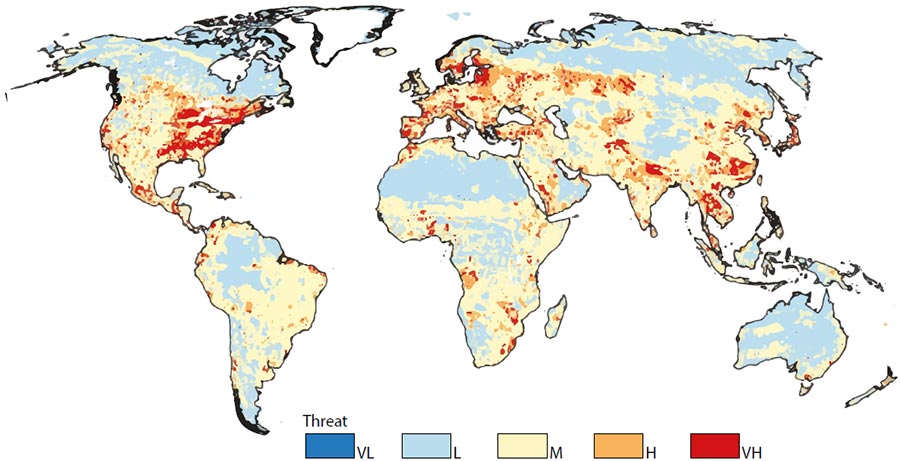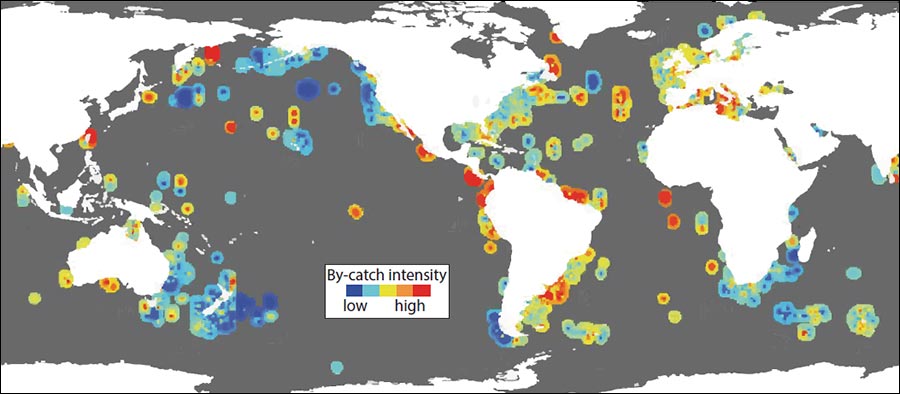The main direct pressures on global biodiversity are habitat stress and land-use change, invasive species, pollution, unsustainable use/overexploitation and climate change (mainly as a consequence of higher temperatures, changes in precipitation patterns and increasing frequency and severity of extreme weather events and wildfires) (UNEP 2012). The spatial distribution and combination of these pressures varies across the globe (Figure 6.3) and affects species groups in different ways (Figure 6.4), although detailed data for invertebrates, which comprise most of the diversity of life, are lacking (Collen et al.2012).

